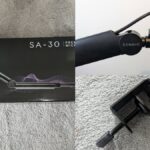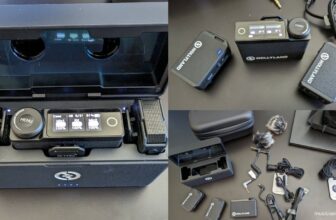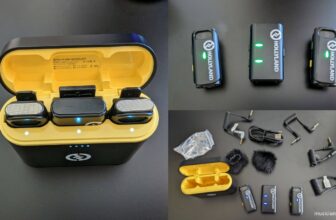Sensic SA-30 Microphone Boom Arm Review
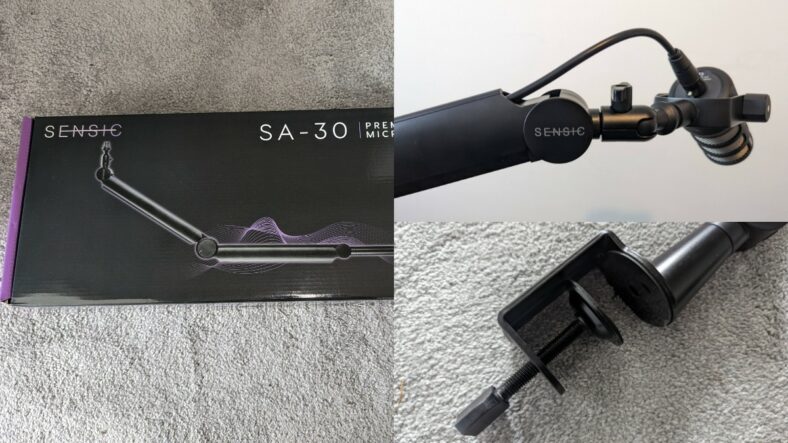
Lately, I’ve had a chance to test the Sensic SA-30 Microphone Boom Arm and I tested it with two of my heavier microphones (The Shure SM7B and Rode PodMic). It’s quite a good option compared to budget boom arms, it moves very smoothly, and it looks quite neat on my desk.
Sensic sent me the SA-30 for free for review, but it absolutely does not affect my opinions in this review, and as you can see I’m being quite frank with what I think are the pros and cons of this boom arm.
Overall, I was pretty impressed with this boom arm, I read some reviews online previously about it not being able to support heavier mics, but that wasn’t a problem at all for me and it supported a Shure SM7B and Rode PodMic without any issues for me (I’ve included photos later in the article). Also, the one I got definitely has enough room for bigger XLR cables. I sent Sensic an email to ask them why my experience was different here, and they claim that there is a bit of misinformation in some reviews about this product. I can’t verify this as I have only one sample to evaluate here, but I thought it was worth including in this review.
On the other hand, there was a slight misalignment issue as you can see in the photos below, but that wouldn’t affect the operation of the boom arm.
The Sensic SA-30 is sturdily built and has good, smooth adjustability. I’ve liked using it in my setup, the springs are quite strong and they keep it from drooping, and the full 360-degree rotation offers plenty of positioning options. It’s a bit pricey in comparison to budget boom arms, but I’d prefer having this one on my desk. Though for me, it doesn’t quite replace the experience of using the Rode PSA-1, but it’s not far off.
Contents
Sensic SA-30 Microphone Boom Arm
Verdict
I’ve been quite impressed by the Sensic SA-30 boom. It's got better build quality than budget boom arms, smooth movement, and a smart design that hides bulky XLR cables. In my opinion, I still have a preference for the Rode PSA-1, but the SA-30 is an alternative that I would be quite happy to keep on my desk. It does have some negatives: There's was a small misalignment issue on the one I got (see images below), and it's a little bigger on camera than some might prefer. IMO, it's a great option for anyone looking for a heavier-duty boom arm.
Pros
- Superior quality compared to budget boom arms
- Smooth motion operation
- Capable of hiding XLR cables
- Sturdy enough to handle heavier microphones
- I’d expect reasonable durability from this
Cons
- It’s a bit pricey
- Can appear bulkier on camera compared to some alternatives
- Slight misalignment issue in the design of the one that I got, but it doesn’t seem to affect performance
General Thoughts
The Sensic SA-30 Microphone Boom Arm is sturdy and can handle some of the more popular mics like the Blue Yeti, Blue Snowball, the RØDE Pod Mic, and Shure SM7B. It’s also pretty adjustable, which is nice.
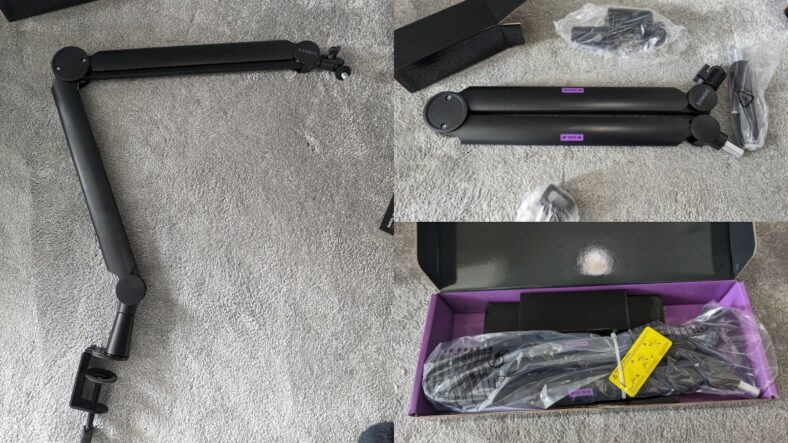

The arm is quite flexible – you can move it around, stretch it out, or even do a full 360-degree spin with it. The movement is extremely smooth overall, and it’s a very nice boom arm to use indeed.
It’s got a nice cable management system. You can hide your cables inside the arm, which helps if you like to keep your workspace tidy. It’s also easy to fold up and carry around if you need to move it around a lot.
Tech Specs
- Material Type: Aluminum, Plastic, Steel
- Compatibility: Universal
- Cable Management System: Yes
- Included Accessories: Table clamp, grommet mount, riser, microphone clip, adapter, DSLR screw, and manual
- Adapters: 1/4″, 3/8″, and 5/8″
Compatibility and Weight Capacity
The Sensic SA-30 Microphone Boom Arm is widely compatible with a lot of popular microphone options as well as shock mounts. Even heavier microphones like the Shure SM7B and Rode PodMic (as shown in the picture below). It should have no problem fitting other popular options like the Blue Yeti, Blue Snowball, or other Rode mics. It’s also well able to fit fairly thick XLR cables.
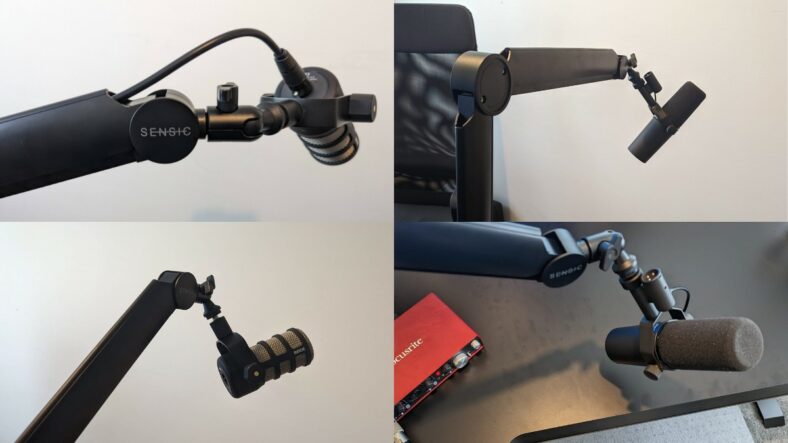

Durability
The Sensic SA-30 is quite sturdy compared to other budget-friendly boom arms I’ve tried. I really like the heavy-duty design and it feels pretty well made.
One thing I noticed was that there is a slight misalignment issue as you can see in the photos below, but that wouldn’t affect the operation of the boom arm.
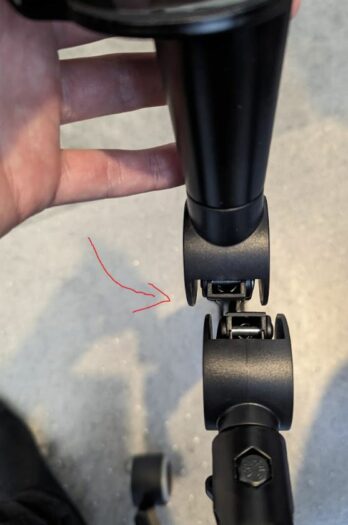

You would probably also need to be fairly careful with the slider that covers the cable area, if you extend the boom arm while that is only half-on, you could potentially bend it (or possibly snap it, I certainly haven’t tried that), but you probably won’t be opening and closing that too often.
Adjustability
When it comes to adjustability, the Sensic SA-30 Microphone Boom Arm doesn’t let up. This thing can do a full 360-spin and has a fold-up design that’s compact and handy. The ball head adapter lets you position your mic just right.
The overall setup is really easy, especially with the extra accessories. There’s even a 6-inch riser included, which is perfect if you like to keep your mic behind your monitor screen but still want it easy to reach overhead.
Pricing
The Sensic SA-30 Microphone Boom Arm is on the pricier side of boom arms. But, that being said, the quality of it is a lot better than budget boom arms. You get smoother motion, more durable build quality, and a good cable management system. Overall, it definitely brings value to the table, despite its price tag.
Who is the Sensic SA-30 For?
The Sensic SA-30 boom arm would be great for content creators, YouTubers, vloggers, musicians, and anyone that needs a sturdy boom arm so that they can get up close with their microphone.
Verdict
The bottom line, the Sensic SA-30 is a solid boom arm that can handle heavier mics. Compared to more budget-friendly boom arms, the SA-30 is better in terms of build quality, adjustability, and aesthetics, and it should fit most microphones. Although I haven’t had this boom arm for long enough to fully test its durability, my impressions of it are quite positive.

